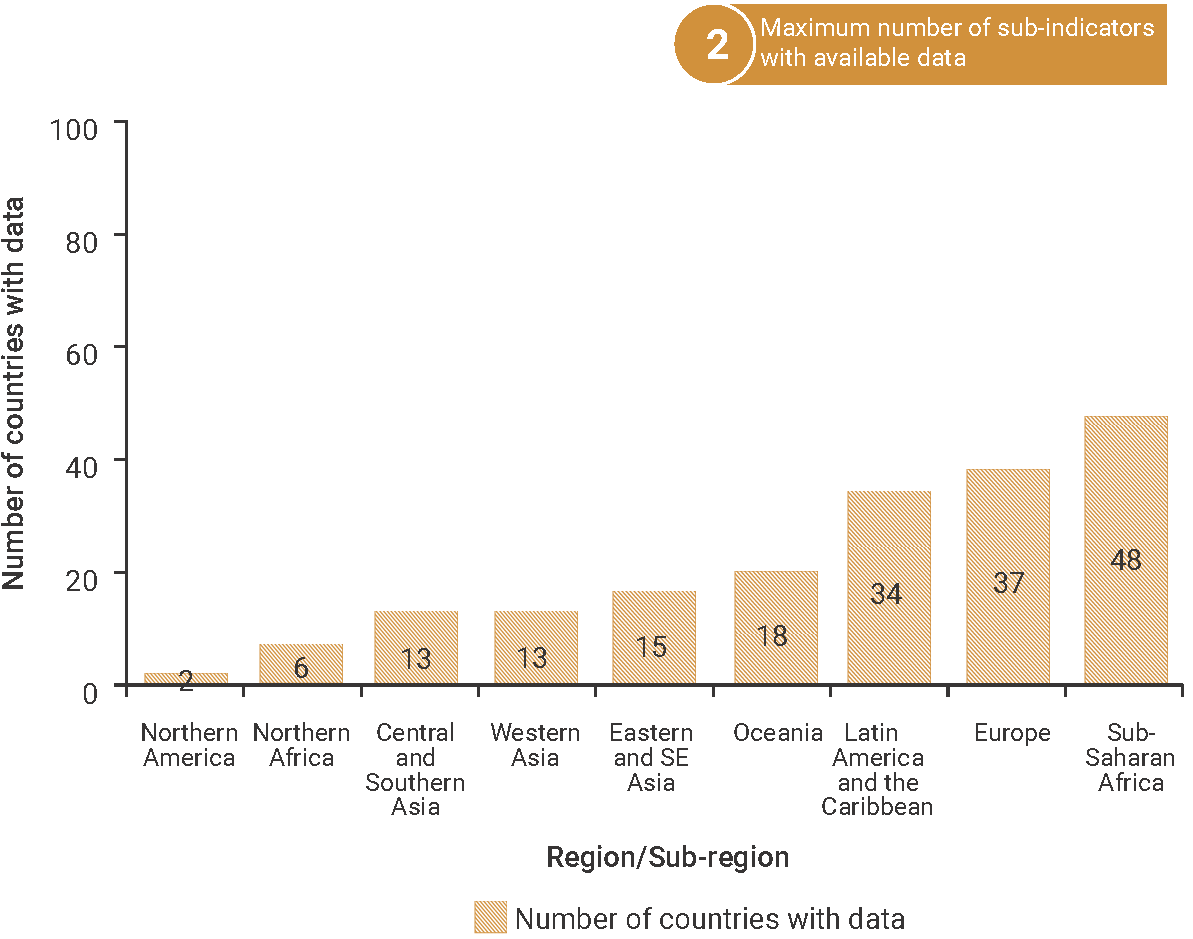SDG Indicator 15.a.1/15.b.1: (a) Official development assistance on conservation and sustainable use of biodiversity; and (b) revenue generated and finance mobilized from biodiversity-relevant economic instruments
1. Key features and metadata
Definition: This indicator aims to show temporal trends in:(a) disbursements of total Official Development Assistance (ODA) from all donors for biodiversity and (b) revenue generated and finance mobilized from biodiversity-relevant economic instruments.
| Sub-indicator | Disaggregated by |
|---|---|
|
DC_ODA_BDVDL Total official development assistance for biodiversity, by donor countries (millions of constant 2021 USD) |
No current data disaggregation available.
|
|
DC_ODA_BDVL Total official development assistance for biodiversity, by recipient countries (millions of constant 2021 USD) |
Sources of information: (a) the Development Assistance Committee of the Organisation for Economic Cooperation and Development (DAC/OECD) and Creditor Reporting System (CRS) database and (b) the Environmental Policy Committee of the OECD (EPOC/OECD) and OECD Policy Instruments for the Environment (PINE) database.
Related SDG indicators: 15.9.1 (b) (Integration of biodiversity into national accounting and reporting systems).
2. Data availability by region, SDG Global Database, as of 02 July 2025

3. Proposed disaggregation, links to policymaking and its impact
| Proposed disaggregation | Link to policymaking | Impact |
|---|---|---|
|
Total ODA for biodiversity by main category of donor DAC data (Rio markers) (millions of constant 2021 USD):
|
This type of disaggregation is necessary for emphasizing the respective share of each donor category to the global financial effort of the international community for biodiversity. It can also be used by decision-makers to identify untapped resources, potential partnerships and cooperation among donors to leverage existing financing resources (OECD 2023b). |
Multilateral development institutions and non-DAC countries as well as public development finance for biodiversity have increased their share and this is expected to continue increasing in the coming years(OECD 2023b). In addition, public aid plays a catalytic role in the mobilization of private finance, which is also anticipated to grow to fill the current financial biodiversity gap. In particular, with regard to Target 19 of the Kunming-Montreal Global Biodiversity Framework: Mobilize $200 Billion Per Year for Biodiversity From all Sources, Including $30 Billion Through International Finance(CBD 2022). ODA for biodiversity from different donors is crucial for financing and advancing sustainable forest management, including conservation and restoration. |
|
Total ODA for biodiversity, by objective (millions of constant 2021 USD) (OECD 2023b):
|
The disaggregation of the total amount of biodiversity-related ODA by end objectives provides relevant information on the primary purpose of the allocated funds and their potential impacts on biodiversity. In the DAC Biodiversity marker scheme, biodiversity-related ODA is documented as targeting the objectives of the CBD – with biodiversity as a “principal” or “significant” objective. This disaggregation provides an indication of the preference for direct and stand-alone action for biodiversity preservation or the integration of biodiversity considerations into other global or sectoral policy interventions. Thus, it contributes to enhancing the monitoring of development finance in supporting biodiversity and its outcomes (Asensio, Blaquier and Sedemund 2022; OECD 2023b). |
Core funding is critical and needs to be maintained over time to lay the foundations (i.e. regulatory frameworks, institutions, investment, and capacity) of a long-term policy to address the underlying causes of biodiversity loss. On the other hand, interventions aimed at other objectives with significant biodiversity component are also needed while the dedicated funds for these activities are accounted for as supporting biodiversity in the Rio marker scheme. Their growing significance reflects a political orientation toward greater biodiversity mainstreaming across all of the development cooperation spectrum. In doing so, this disaggregation also helps assess how the different categories of funding contribute to the objectives of the Convention on Biological Diversity (article 1). For instance, ensuring the conservation of biodiversity and the sustainable use of its components, including sustainable forest management (CBD 1992). |

